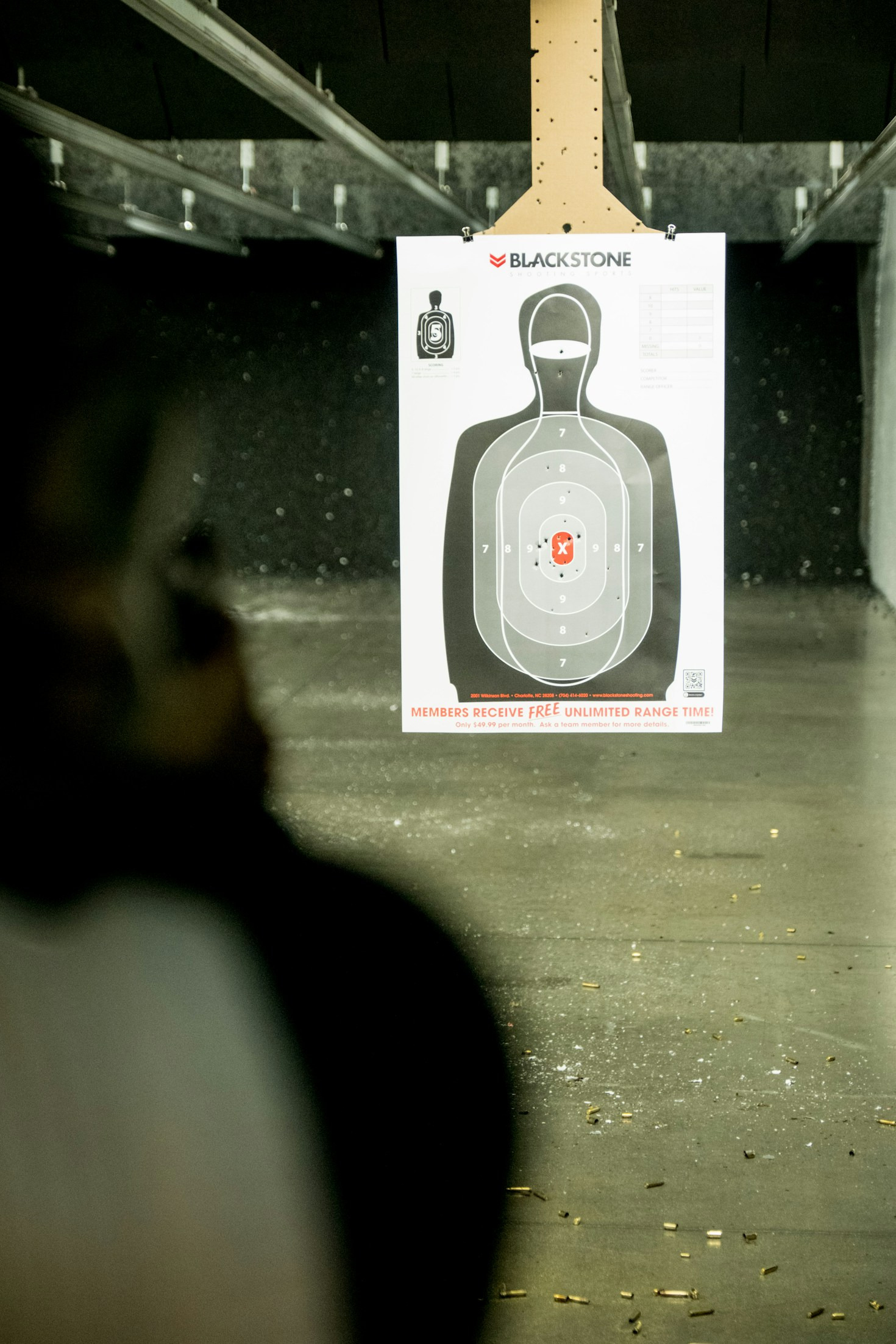From Nervous to Steady: Steps Toward Calm Confidence
If you’re a new gun owner and feel nervous—you’re not alone. Many first-timers experience anxiety when they handle a firearm for the first time. That nervousness isn’t weakness—it’s wisdom. It means you respect what’s in your hands, and that’s a good place to begin.
At First-Gun.com, we know that anxiety doesn’t go away with fancy gear or loud confidence—it fades with the right information, smart training, and real-life experience. If you’re unsure how to move from fear to focus, this guide is for you.
“Confidence with a gun doesn’t come from being fearless—it comes from knowing you’re in control, because you took the time to learn it right.”
— First-Gun.com


Why New Gun Owners Feel Anxious
Anxiety around guns is completely normal. Here are a few common reasons people feel unsettled when they start:
- Lack of experience: You may never have handled a firearm before.
- Fear of making a mistake: You’re worried you might do something wrong or unsafe.
- Negative associations: News stories, past trauma, or cultural stigma may cause tension.
- Sensory overload: Loud sounds, recoil, and unfamiliar surroundings at the range can be overwhelming.
- Pressure to perform: Some new owners feel like they have to prove they “belong.”
Here’s the truth: every safe and skilled gun owner once stood where you are now. They started nervous, asked questions, made mistakes, and got better over time.
Let’s explore how you can do the same—calmly, safely, and with confidence.
7 Steps to Calm Confidence
Step 1: Accept Your Anxiety Without Shame
First, don’t beat yourself up for feeling anxious. You wouldn’t drive a car for the first time without feeling cautious—and a gun deserves even more care. Anxiety is a sign of respect, and it can be turned into strength with time and guidance.
Step 2: Learn the Basics at Home
Start where you’re most comfortable: at home. Learn how your firearm works without even loading it. Read the manual. Watch videos. Practice holding it properly, working the slide or cylinder, and understanding the parts and functions.
Use dry fire practice (with a double-checked, unloaded gun) to get familiar with trigger control, grip, and aim. This builds muscle memory in a no-pressure setting.
Step 3: Focus on Safety First
Knowing the 4 golden rules of gun safety will give you something solid to hold on to:
- Treat every gun as if it’s loaded.
- Keep your finger off the trigger until ready to shoot.
- Never point the muzzle at anything you’re not willing to destroy.
- Be sure of your target and what’s beyond it.
When you follow these rules, you reduce the risk of accidents—and your anxiety starts to calm because you know you’re doing things the right way.
Step 4: Visit the Range with a Purpose
Your first range trip doesn’t have to be a full shooting session. Just visit to look around. Bring a friend or mentor if possible. Let the staff know it’s your first time—many ranges love helping beginners feel welcome.
When you do shoot for the first time, start with slow, controlled steps: one round at a time, calm breathing, short sessions. Don’t focus on accuracy or speed. Just get used to the experience.
Step 5: Take a Beginner’s Class
There’s no substitute for hands-on instruction. A certified trainer can give you confidence, correct mistakes gently, and show you how to stay safe under pressure.
Many classes are designed for complete beginners and offer a welcoming, supportive environment. You’ll leave feeling far more confident than when you arrived.
Step 6: Build Routine Through Repetition
The more you practice—safely—the more confidence you build. Practice at home with dry fire drills. Go to the range once a month. Review safety rules before each session. Set small, achievable goals like “load and unload safely” or “improve grip.”
Repetition builds confidence because it removes the fear of the unknown.
Step 7: Reflect on Progress, Not Perfection
Celebrate small wins. Did you feel more comfortable at the range today than last week? Did your dry fire drill go smoother? That’s success.
Confidence isn’t about being perfect—it’s about knowing you’re on the right track. Keep a journal or checklist of your progress, and let it remind you how far you’ve come.
What Calm Confidence Looks Like
A confident gun owner doesn’t act tough or show off—they move with purpose, treat every step with care, and know how to stay calm even when they make a mistake. You’ll notice your anxiety turning into focus, your tension turning into technique.
That’s what we call calm confidence—and it’s the goal for every beginner who starts with us.
Final Thought: You’ve Got This
The journey from anxious to confident takes time, but it’s worth every step. You’re not alone, you’re not behind, and you’re not the only one who’s ever felt unsure.
At First-Gun.com, we’re here to help you take things slow, ask the questions others won’t, and build a strong foundation for lifelong safety and confidence. Check out our YouTube channel for beginner-friendly videos that show you exactly what to do, one step at a time.
Remember:
Start slow. Learn right. Shoot safe.
🔰 New Gun Owner & Beginner Hashtags
- #NewGunOwner
- #FirstGun
- #BeginnerShooter
- #LearningToShoot
- #ResponsibleGunOwnership
- #GunConfidence
- #StartSlowShootSafe
- #GunTrainingJourney
- #ShootersMindset
- #FirearmBasics
🧠 Anxiety & Confidence Hashtags
- #OvercomingFear
- #ConfidenceNotFear
- #AnxietyToConfidence
- #MentalTraining
- #GunSafetyConfidence
- #CalmAndCapable
- #MindfulShooting
- #ConfidenceWithControl
- #FearlessFirearmHandling
- #SafetyOverSpeed


Leave a Reply